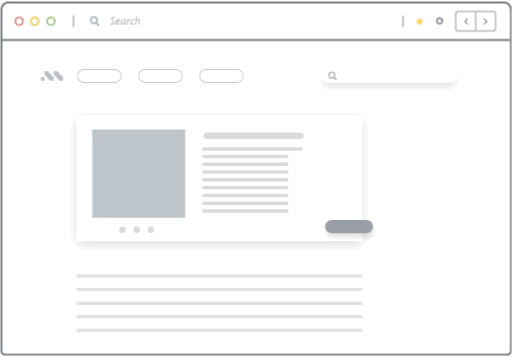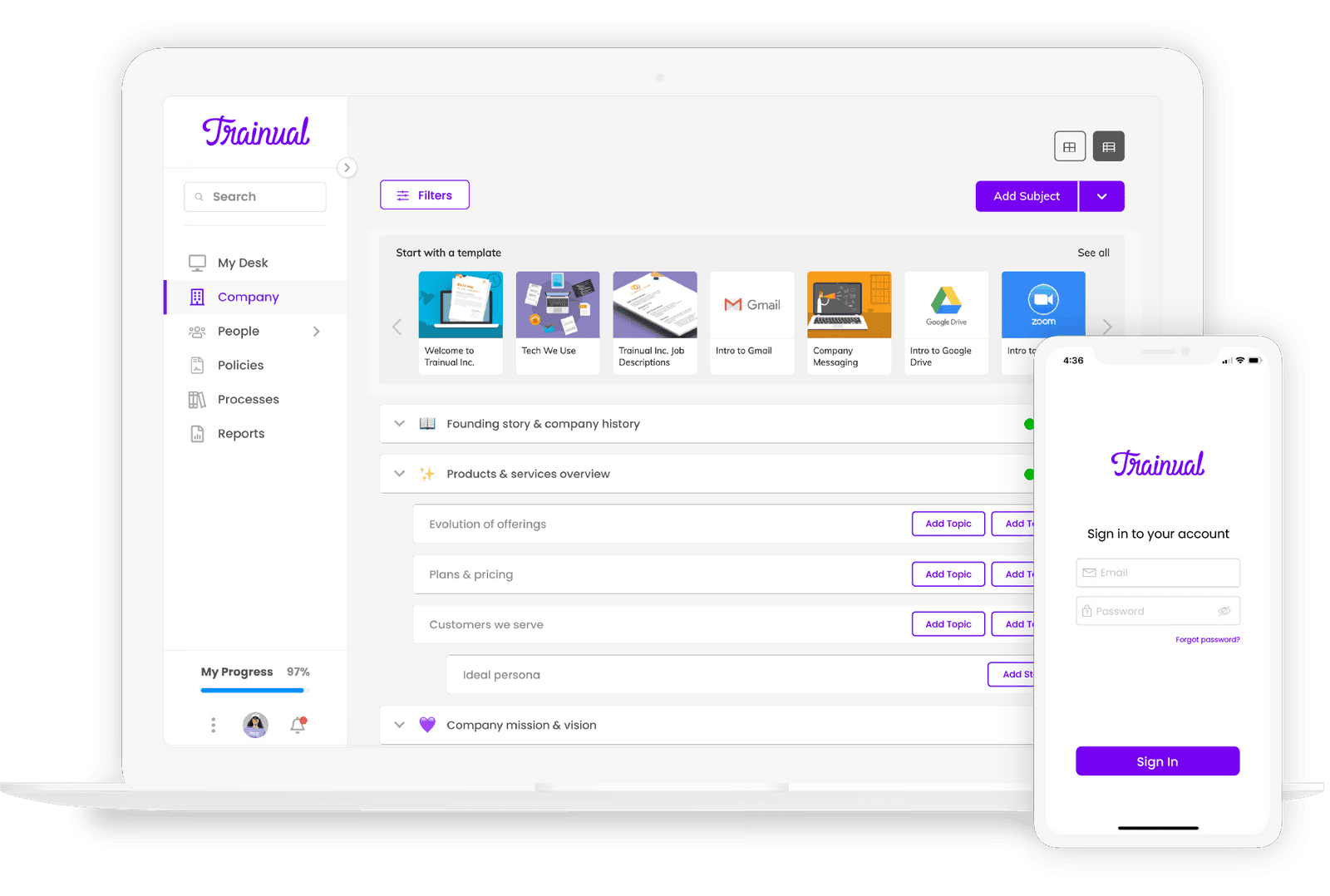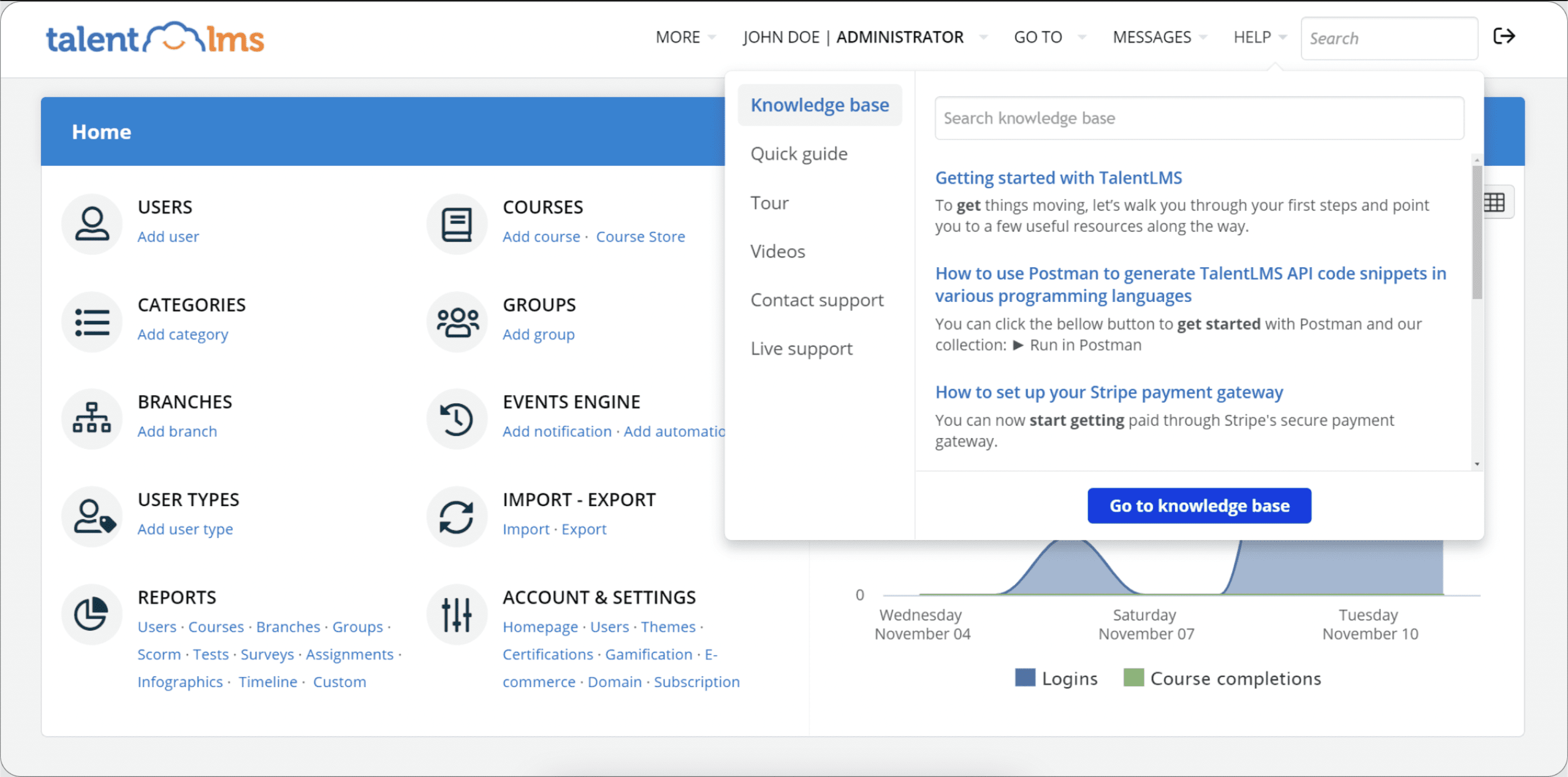Product knowledge training is about creating experts who make an impact. When your team has a deep understanding of your product, they’re not just better at their jobs—they become your most valuable asset.
But getting product knowledge training right isn’t always easy. Too often, training programs fail to capture attention or leave employees feeling checked out and disengaged.
So how can you ensure your training sticks and makes a real difference? By building a practical, engaging, and relevant product knowledge training program for your relevant team members.
Effective product knowledge training should go beyond memorizing features and benefits. It’s about equipping employees with the tools to solve problems and make informed decisions.
In this article, we’ll explore best practices for building a comprehensive product knowledge training program, share actionable ideas to boost learning effectiveness, and highlight the tools that can make a real difference. You’ll learn how to align training with business goals, encourage collaboration, and create a training plan that leaves a lasting impact.
What Is Product Knowledge Training?
Product knowledge training is the process of educating your workforce about the goods, products, and services to help them perform their job better. This type of employee training extends into how each product works if a company offers a suite of products, what the product’s benefits are, how it can best serve the customer, common troubleshooting answers, and more. It’s also helpful for other teams across your org— marketing teams can truly capture your product’s key selling points, brand teams can create meaningful stories and tones, and recruiting can ensure new hires have experience in similar industries. Product teams know what to prioritize in their roadmaps.
Benefits of Investing in Product Knowledge Training
Implementing effective product knowledge training for your teams is more than just learning the ins and outs of your product—it’s about driving growth, improving customer satisfaction, and ensuring your business stays competitive.
Here’s a closer look at the key advantages.
1. Improved customer experience and satisfaction
A comprehensive understanding of your product empowers your team to create exceptional customer experiences. Whether it’s customer onboarding, ongoing support, or upselling, well-trained employees can provide faster, more accurate answers to customer queries.
According to Harvard Business Review, product knowledge enhances a customer’s perception of your brand and drives loyalty, which is crucial in any competitive marketplace.
Employees well-versed in product features and applications can articulate its benefits more effectively, leading to quicker problem-solving and fostering greater customer trust. An employee who knows the product can also anticipate customer needs, creating a more personalized and seamless experience. This can significantly boost customer retention rates and reduce churn.
2. Increased employee confidence and performance
An effective product knowledge training program ensures that employees feel confident in their knowledge, reflecting their performance. When your teams are properly trained, they not only have the technical know-how but also gain the confidence to handle complex scenarios and customer inquiries.
This confidence extends to internal collaboration, as well. Teams can communicate with more clarity, ensuring smooth collaboration across departments. Well-informed employees are also more likely to contribute new ideas, which sparks digital innovation and drives the company forward. Ultimately, knowledge and confidence work hand in hand to increase both individual and team performance.
3. Reduced support tickets and operational costs
Product knowledge training significantly impacts operational efficiency by reducing the number of support tickets your team needs to handle. A well-trained team can answer customer questions directly, minimizing the need for escalation to higher levels of support.
Empowering employees with the right tools and knowledge allows them to solve problems independently without relying heavily on supervisors. As a result, there is less strain on your support infrastructure, which helps lower costs while increasing the speed of issue resolution. Employees also spend less time looking for answers or clarifications, making their workdays more productive.
4. Faster time-to-value for new hires
For new employees, product knowledge training can drastically reduce their time-to-proficiency. The quicker your new hires get up to speed on your product, the sooner they can contribute meaningfully to the team and deliver results.
Product knowledge training accelerates employee onboarding by equipping new team members with the essential information they need to succeed. Instead of spending days or weeks figuring things out, they can dive right into their roles and start performing at a higher level much sooner. This not only benefits the employee but also has a positive impact on the team and the business at large.
5. Enhanced knowledge sharing and collaboration
Knowledge sharing becomes much easier when employees comprehensively understand your product. A culture of continuous learning and sharing product knowledge promotes collaboration, enabling teams to learn from each other’s experiences and insights.
Product knowledge training helps break down silos between departments by encouraging employees to share helpful information. For example, your sales team might learn about common customer pain points from the support team, while the product development team might share new features with sales to improve pitch accuracy. This interconnectedness strengthens the entire organization, driving better employee and customer outcomes.
6. Shortened “aha!” moment for customers
A firm grasp of product knowledge empowers employees to help customers reach their crucial ”aha!” moment faster. This is when customers fully understand how your product solves their pain points and how to use it to its maximum potential.
By efficiently guiding customers through the product, employees enable them to quickly realize the value of what they’re using, which boosts customer satisfaction. For instance, a customer who quickly learns how to utilize a specific feature is much more likely to become a repeat buyer. This quick onboarding experience also increases customer retention and ensures that customers see immediate value, strengthening the relationship over time.
7. Better product adoption and reduced churn
Effective product knowledge training isn’t just about onboarding employees; it’s also about supporting customers in their journey to becoming experts in using your product. Through consistent education and support, customers feel more confident adopting new features or solutions, ultimately boosting the product’s overall adoption rate.
Having employees who can confidently explain product features lowers the risk of customer frustration, helping to prevent churn. By facilitating customer education throughout their lifecycle, you ensure they continue using your product, discovering new capabilities, and deriving lasting value.
8. Increased revenue and upselling opportunities
When your teams know the product thoroughly, they are better equipped to spot upselling opportunities. For example, customer support agents and account managers who are well-versed in product features can proactively suggest upgrades or additional products that benefit the customer.
This level of product expertise creates opportunities for additional revenue without resorting to hard sales tactics. Instead, employees have more meaningful, value-driven conversations, naturally leading to greater customer satisfaction and loyalty. This is a subtle but powerful way product knowledge training contributes to revenue growth.
Product Knowledge Training by Department
Product knowledge training isn’t a one-size-fits-all approach—it should be tailored to the unique needs of each department in your organization. After all, how a sales team uses product knowledge will look vastly different from how the marketing or customer service teams leverage it.
A thoughtful, department-specific training strategy can enhance collaboration, improve performance, and create a cohesive customer experience.
Here’s how product knowledge training can be applied across key teams in your organization:
1. Sales team
For sales teams, product knowledge is about much more than memorizing features. It’s about understanding your product’s unique value to different customer personas and mastering the art of articulating those benefits with confidence. Sales teams that understand their product can customize their pitches more intentionally. Doing so allows them to tackle customer pain points, respond to objections skillfully, and accelerate deal closing.
- Equip sales reps with role-play scenarios that mimic real customer objections.
- Provide dynamic user guides they can reference during pitches.
- Incorporate competitive analysis into training so reps can highlight why your product stands out.
2. Marketing team
Marketing teams rely on product knowledge to create content that resonates with your target audience. With it, campaigns can feel more generic and aligned with customer expectations. A well-trained marketing team can bridge the gap between what your product does and how it solves customer problems, driving engagement and generating demand.
- Train marketers on the product’s key features, benefits, and differentiators to ensure all messaging is on-brand.
- To deepen their understanding, involve them in live product demonstrations or customer feedback sessions.
- Encourage collaboration with product teams to uncover customer success stories or emerging use cases.
3. Customer support team
When customers reach out for help, they expect immediate and accurate answers. For support teams, product knowledge is the backbone of exceptional service. Support agents who fully understand your product resolve issues faster, leaving customers confident and satisfied.
- Offer training on troubleshooting common issues, walking through product interfaces, and using advanced features.
- Create a knowledge base they can quickly reference during customer interactions.
- Introduce role-playing exercises to simulate high-pressure situations.
4. Customer success team
The customer success team ensures your clients see long-term value in your product. This requires an in-depth understanding of advanced product capabilities and aligning those with customer goals. A knowledgeable customer success team can turn happy customers into loyal advocates championing your brand.
- Teach success managers how to analyze usage patterns and identify opportunities for upselling or expansion.
- Provide training on advanced features and integrations that drive results for customers.
- Use real-life case studies to demonstrate how the product has solved similar challenges for other clients.
5. Product team
Product teams benefit from training that keeps them aligned with how customers use the product. This knowledge fuels innovation and ensures that the roadmap reflects customer needs. Understanding technical aspects and customer applications allows product teams to prioritize features that deliver the most significant impact.
- Share insights from customer feedback and support tickets during training.
- Conduct regular product usage reviews to highlight areas for improvement or enhancement.
- Involve product teams in cross-departmental training sessions to see how other teams interact with the product.
6. HR & recruitment teams
Even HR and recruitment teams play a role in product knowledge. While they don’t need the same depth of understanding as other departments, familiarity with the product ensures they can identify candidates who align with the company’s mission and values. Empowering HR with product knowledge helps attract and onboard talent aligned with your company’s vision.
- Provide a high-level overview of the product’s purpose and target audience.
- Train HR teams to assess whether candidates have relevant industry or technical experience.
- Include a session on how the company’s product impacts different roles during onboarding for new hires.
Providing customized product knowledge training to each department fosters greater cohesion and alignment within your organization. From sales reps confidently closing deals to support agents solving problems quickly, every interaction strengthens the customer experience—and positions your business for success.
Related Resources
Types of Product Knowledge
Product knowledge training extends beyond teaching which products to recommend for certain problems. It provides your sales organization with a detailed understanding of your company’s purpose, target audience, and ethos.
Considering that 64% of people buy from companies that align with their values, it’s always a good idea to make sure your employees understand and can discuss your business’ ethos.
Let’s take a look at the key areas your product knowledge training should cover:
- Core product knowledge: Fundamental knowledge of the product’s features, functions, and benefits. It’s essential for all employees, to ensure they understand the key aspects of the product they are supporting, selling, or using.
- Technical product knowledge: Deep understanding of a product’s technical specifications and backend operations. This knowledge is typically required for support and development teams to troubleshoot issues and offer solutions.
- Market and industry knowledge: Insights into the industry in which the product operates. It’s essential for sales teams to relate the product to market needs, positioning, and competitor offerings.
- Customer-centric product knowledge: Understanding how customers use the product, including common use cases and pain points. This knowledge helps sales and support teams offer tailored solutions that resonate with customers.
- Product application knowledge: Knowledge of how to apply the product in real-world scenarios. This is especially valuable for employees in training or customer support roles to guide users through various product scenarios.
- Product evolution knowledge: Awareness of the product’s updates, changes, and future roadmap. This knowledge ensures employees stay aligned with the product’s ongoing improvements and can communicate updates to customers effectively.
- Compliance and legal knowledge: Understanding of the regulations and compliance standards related to the product. This is crucial for teams handling sensitive data or working in regulated industries, ensuring the product complies with industry standards and legal requirements.
- Pricing and packaging knowledge: Knowledge of the product’s pricing models, subscription options, and packages. Essential for sales teams to confidently sell the product while addressing customer objections related to cost.
Product Knowledge Training Methods
Training your team on product knowledge is about creating an experience that fosters more profound understanding, ensures long-term retention, and equips your team to leverage that knowledge effectively in real-world scenarios.
Here are effective employee training methods for product knowledge training sessions that can help your team truly connect with the product and make it their own:
1. Interactive product demos
Instead of discussing the product’s features, why not immerse your team in an interactive demo? Let them experience the product from the customer’s perspective.
- Run live demonstrations where participants can ask questions and interact with the product in real-time.
- Set up scenarios that mirror what a customer might experience, allowing your team to troubleshoot issues as they arise.
- Encourage active participation by assigning roles or tasks during the demo to engage everyone.
Interactive demos help your team understand the product in a hands-on way, making the learning process far more engaging and memorable.
2. Microlearning modules
Sometimes less is more, and microlearning is a great way to break down complex product concepts into digestible chunks.
- Design bite-sized lessons focusing on one product feature or use case at a time.
- Use multimedia—videos, infographics, quizzes—to deliver training in a variety of engaging formats.
- Make modules easily accessible so team members can review them whenever they need a refresher.
Microlearning boosts retention by presenting information in small, manageable portions, and gives your team the flexibility to learn at their own pace.
Microlearning improves long-term retention by up to 80%, according to RPS.
3. Role-playing & simulation
Product knowledge training doesn’t always have to be a lecture. Create opportunities for your team to apply what they’ve learned in simulated, real-world situations.
- With Whatfix Mirror, create a sandbox environment of your product that allows employees to interact with a controlled, simulation training environment for hands-on learning.
- Host role-playing exercises where team members act as customers and agents, working through different product scenarios.
- Introduce common customer objections and challenges, allowing your team to practice overcoming them.
- Set up a “Customer Journey” simulation, where your team walks through all stages of customer interaction, from awareness to post-purchase.
By simulating real interactions, you allow your team to practice and refine their skills in a safe, supportive environment.
4. Cross-department knowledge sharing
Everyone’s perspective on the product differs, so why not take advantage of that? Cross-department training sessions can help break down silos and encourage a deeper understanding of how various teams use the product.
- Organize “lunch-and-learn” sessions in which each department shares how it interacts with the product and what challenges it faces.
- Facilitate product workshops that allow teams to share insights, tips, and real-life examples.
- Involve customer success, sales, and support teams to give different viewpoints on the product.
Cross-department knowledge sharing fosters collaboration and gives everyone a holistic understanding of how the product fits into different business areas.
5. Gamified learning
Learning doesn’t have to feel like a chore. Gamification adds an element of fun and competition that can motivate your team to engage with product knowledge training more fully.
- Create a points system where employees earn rewards for completing training modules, answering product-related quizzes, or completing challenges.
- Set up a leaderboard to encourage friendly competition and give shout-outs to top performers.
- Use badges or certifications to recognize achievements and create a sense of progression.
Gamification not only motivates but also makes the training process enjoyable, ensuring your team stays engaged and invested.
6. Product use case scenarios
Sometimes, the best way to understand a product is to see it applied in different situations. Use case scenarios can help your team connect the dots between features and customer needs.
- Develop case studies illustrating how customers use the product to solve their unique challenges.
- Walk through these scenarios in team meetings, discussing how the product was used effectively and what improvements could be made.
- Encourage your team to brainstorm additional use cases they believe would be valuable to your customers.
By exploring various use cases, your team will not only understand the product better but also be able to think creatively about how it can be applied in different contexts.
7. Knowledge base & resource centers
Your product knowledge training should be ongoing, not just a one-time event. Build a centralized resource hub where your team can access up-to-date training materials, product updates, and FAQs.
- Create a knowledge base that houses training modules, videos, documentation, and troubleshooting guides.
- Regularly update it with new product features, customer feedback, and insights.
- Ensure your team can easily access this resource to refresh their knowledge when needed.
Having a readily available resource center empowers your team to continue learning and stay updated without waiting for formal training sessions.
8. Customer feedback integration
One of the most effective ways to solidify product knowledge is to incorporate real customer feedback. By hearing directly from those who use your product, your team gains insights into its value and potential pain points.
- Collect customer feedback through in-app surveys, reviews, or support tickets, and share the results with your team.
- Host discussion sessions where your team can analyze the feedback and suggest product improvements.
- Use customer testimonials and success stories as part of the training material to highlight the product’s real-world impact.
Integrating customer feedback into training provides context and helps your team feel more connected to the product and the people it serves.
Tips for Creating an Effective Product Knowledge Training Plan
Developing a product knowledge training program that genuinely resonates with employees requires thorough, engaging, and, most importantly, effective training.
Here are some ways to ensure your product knowledge training program drives real, sustainable results.
1. Align training with business goals
Product knowledge training needs to tie directly into the broader business objectives for it to be truly effective. Doing so ensures that your team understands not only the product itself but also how it contributes to your organization’s success. Ensure your training emphasizes how mastering product features can improve customer experiences, drive sales, and foster innovation.
Training should be presented as a strategic tool focusing on product facts and how those facts relate to larger business goals. This will help employees view their knowledge as a valuable asset that impacts their performance and the company’s bottom line. When employees can connect the dots between their learning and the organization’s success, they’re more likely to be engaged and committed to mastering the material.
2. Make training accessible and flexible
Product knowledge training should never be a one-time event. Instead, create an environment where employees can access resources when needed most. Providing employees with straightforward access to current product information is essential for fostering ongoing learning and development.
Consider implementing an on-demand learning library where employees can refresh their knowledge anytime during the day, or when they encounter challenges. Flexibility also extends to the delivery format—some employees may prefer video tutorials, while others may benefit from written resources or live webinars.
By offering a variety of learning methods, you accommodate different learning styles and ensure that employees can find the best training approach for them.
3. Encourage collaborative learning
Product knowledge doesn’t have to be learned in isolation. Collaborative learning is one of the most effective ways to ensure knowledge retention. Encourage your teams to share insights, best practices, and real-world experiences related to your product. This can be done through structured knowledge-sharing sessions, team meetings, or internal chat channels.
Creating an open dialogue around product knowledge allows employees to learn from one another’s experiences, helping them see how the product is used in different contexts. It also fosters community and support, where employees feel comfortable asking questions and offering help. The exchange of ideas can spark new ways of thinking about the product and ultimately lead to better problem-solving.
4. Use real-world scenarios in training
The best way to make product knowledge stick is to link it to real-world scenarios. Create training materials with common challenges or customer pain points, and use those as the basis for learning. This method helps employees understand how the product works in theory and how it applies to real customer needs.
For example, you might simulate common customer objections or problems in training scenarios and ask employees to resolve them using product knowledge. This approach provides hands-on experience that builds confidence and prepares employees for the challenges they’ll face on the job. Employees trained to manage real-life situations are considerably more inclined to succeed when faced with those challenges in their daily responsibilities.
Learners retain 75% of information when they engage in practical activities and solve real-world problems, according to the National Training Laboratories Institute.
5. Regularly update training materials
Product features and customer needs evolve, so your product knowledge training materials must also evolve. Regularly update your training content to reflect new product developments, changes in customer expectations, and employee feedback.
Keeping your training content current ensures that employees constantly work with the most accurate information. It also reinforces that product knowledge is a continuous journey, not a one-time event. Set up a regular review schedule to update materials and encourage employee feedback on areas needing clarification or improvement.
6. Measure knowledge retention
To ensure that your product knowledge training program is effective, you need to measure how well employees retain and apply what they’ve learned. Implement tools such as quizzes, assessments, or performance tracking to measure employee performance after training.
These measurements provide valuable insights into which areas your team might need more support in and which aspects of the training are most impactful. By tracking knowledge retention, you can continuously refine your approach and focus on the areas that drive the most value for employees and the company.
7. Celebrate milestones and achievements
Learning can feel like a long journey, especially with complex products. Celebrating milestones and achievements along the way boosts morale and reinforces the importance of product knowledge. Acknowledging milestones, like a team member finishing a training module or a group successfully utilizing a product, plays a crucial role in keeping employees engaged and motivated. These celebrations of achievement foster a positive atmosphere in the workplace.
Publicly recognizing achievements also helps create a culture of learning and growth within your organization. It signals to your team that mastering product knowledge isn’t just expected—it’s something to be proud of. This encouragement helps foster a sense of accomplishment and a desire to continue developing their skills.
8. Make training a part of the company culture
For product knowledge to truly take root, it must be woven into your company culture’s fabric. This means integrating product knowledge training into daily operations, making it something employees naturally turn to throughout their workday.
When learning is part of the culture, employees see it as a natural, ongoing process rather than a separate task or responsibility. They begin to view themselves as continuous learners, constantly evolving their understanding of the product and its features. By embedding product knowledge into your organization’s culture, you create an environment where learning is valued and knowledge is shared freely.
Tools to Support Product Knowledge Training
The right tools can make or break your product knowledge training program. These platforms simplify the process, improve engagement, and ensure your team retains what they’ve learned.
Below are some of the top tools to consider to support your product knowledge training efforts.
1. Whatfix
- G2 rating: 4.6 out of 5 stars
- Pricing: Custom pricing based on requirements
Whatfix is a powerful digital adoption platform designed to transform the way employees learn about products. With its intuitive, in-app guidance and self-help features, Whatfix empowers teams to acquire product knowledge directly within the tools they use every day. It’s especially effective for onboarding, upskilling, and reinforcing learning in real time.

Key features:
- In-app guidance: Provides step-by-step walkthroughs to help employees understand product features directly within the platform.
- Simulated training environments: Easily create replicate sandbox application experiences that provide hands-on training experience to your employees.
- Customizable training flows: Tailors learning experiences to specific roles or use cases, ensuring relevance for every team member.
- Analytics dashboard: Tracks training progress and identifies knowledge gaps for targeted follow-ups.
2. Trainual
- G2 rating: 4.7 out of 5 stars
- Pricing: Starts at $249/month for small teams
Trainual is a cloud-based platform designed to simplify training and onboarding. It’s a go-to solution for creating structured, scalable training programs that centralize product knowledge for easy access. Its user-friendly interface ensures seamless adoption across teams.

Key features:
- Template library: Offers pre-built templates to jumpstart product training programs.
- Knowledge management: Centralizes product information for on-demand learning and easy updates.
- Tracking and reporting: Monitors employee engagement and completion rates for training modules.
3. Seismic Learning
- G2 rating: 4.7 out of 5 stars
- Pricing: Contact for pricing details
Seismic Learning focuses on making learning simple and effective, providing tools for creating bite-sized training modules and interactive lessons. Its integration with Seismic adds a layer of sales enablement, making it perfect for teams needing to connect product knowledge with customer interactions.

Key features:
- Lesson builder: Enables quick creation of customized product training modules.
- Practice scenarios: Allows team members to practice product pitches and scenarios in a safe environment.
- Content integration: Seamlessly incorporates existing materials like PDFs and videos for a rich learning experience.
4. Guru
- G2 rating: 4.7 out of 5 stars
- Pricing: Free for one user, paid plan starts at $15/user per month
Guru is an AI-powered knowledge management tool that delivers product information when and where teams need it most. Integrating directly with tools like Slack and Microsoft Teams ensures employees can easily access accurate product knowledge during customer interactions.

Key features:
- Real-time knowledge sync: Keeps product information up-to-date and accessible across platforms.
- Browser extension: Provides instant access to product details without switching applications.
- Knowledge verification: Ensures all content remains accurate and relevant through automated checks.
5. Docebo
- G2 rating: 4.3 out of 5 stars
- Pricing: Contact for pricing details
Docebo is a comprehensive learning management system (LMS) that makes it easy to design, deliver, and track product knowledge training. It offers a variety of learning methods, including eLearning, virtual classrooms, and AI-based personalized content delivery.

Key features:
- AI-based recommendations: Suggests personalized training modules based on user behavior.
- Content library: Provides access to a wide range of pre-built training materials.
- Performance tracking: Monitors team progress and identifies areas for improvement.
6. TalentLMS
- G2 rating: 4.6 out of 5 stars
- Pricing: Free for up to 5 users, paid plans start at $89/month
TalentLMS is a user-friendly platform designed for businesses of all sizes. It simplifies product knowledge training with features that make creating, delivering, and managing courses easy. Its mobile accessibility ensures that training can happen anywhere, anytime.

Key features:
- Customizable courses: Allows businesses to tailor training content to fit specific product needs.
- Gamification: Encourages engagement with badges, points, and leaderboards.
- Mobile-friendly interface: Provides seamless access to training materials across devices.
Product Knowledge Training Clicks Better with Whatfix
Successful product knowledge training goes beyond simply teaching staff the ins and outs of your product. It’s about cultivating a profound comprehension that equips your team to enhance customer service, boost engagement, and contribute to overall business growth.
As you refine your training strategy, it’s important to partner with the right tools that can help streamline the process and boost engagement. Whatfix, with its powerful digital adoption platform, is uniquely equipped to support your product knowledge training needs. Our interactive in-app guidance and step-by-step walkthroughs allow employees to learn as they work, ensuring that product knowledge is readily accessible and applied when it matters most.
With Whatfix, you can provide continuous learning through easy-to-access resources, reducing time-to-value and supporting employees through every stage of their journey.
By integrating Whatfix’s intuitive platform into your training strategy, you can enhance knowledge retention, streamline onboarding, and reduce support tickets—helping your team achieve those key “aha!” moments that accelerate performance and customer satisfaction.
Ready to empower your teams with expert product knowledge? Explore how Whatfix can help you build an engaging, scalable training strategy tailored to your organization’s needs.






